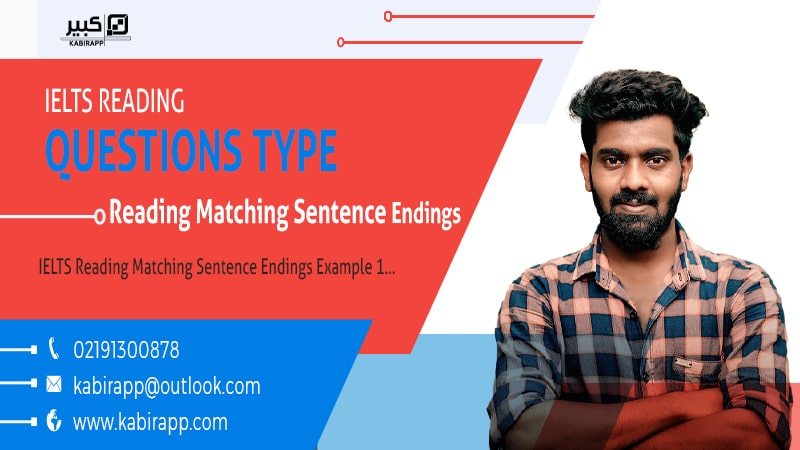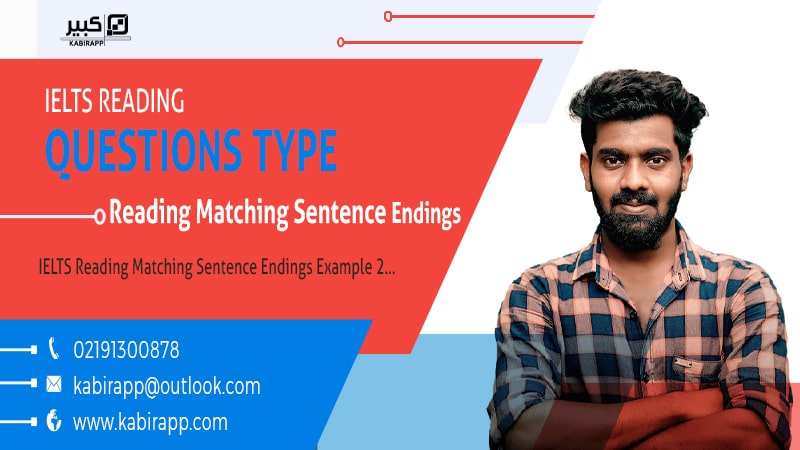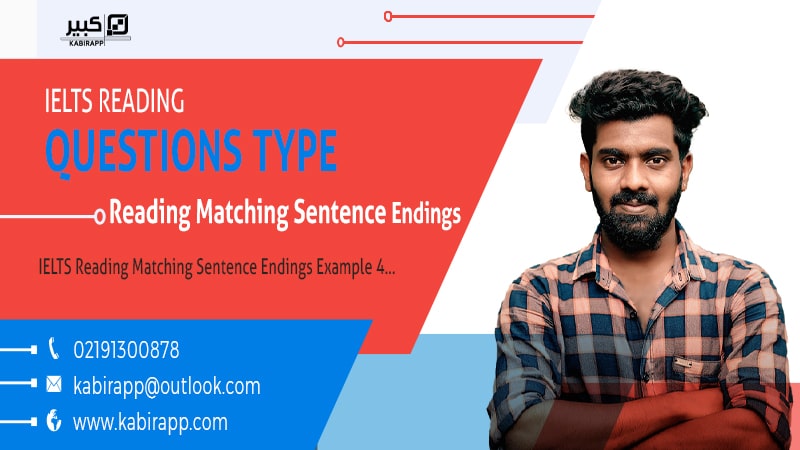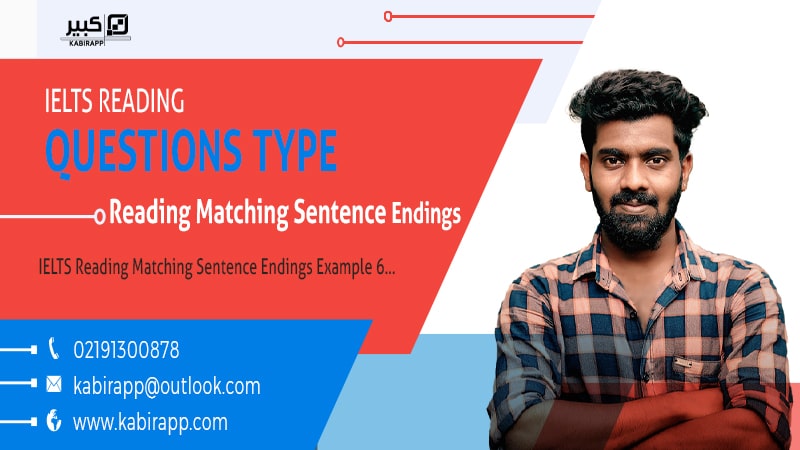محتوای الکترونیکی
IELTS Reading Matching Sentence Endings Example 5
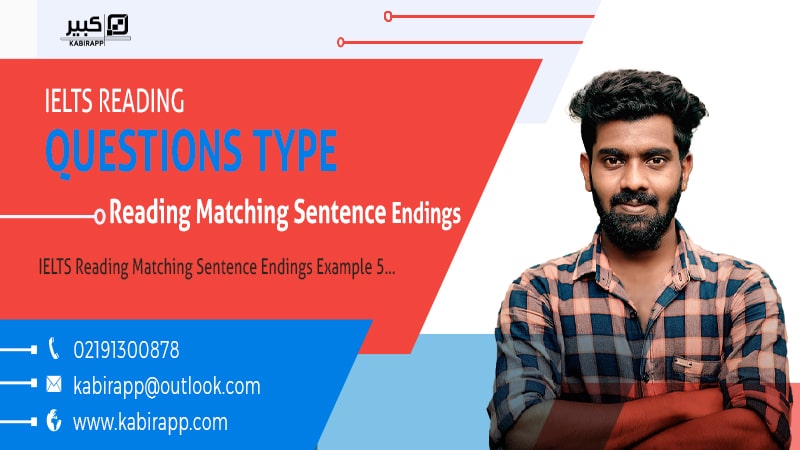
| A. The practice of homoeopathy was first developed by the German physician Samuel Hahnemann. During research in the 1790s, Hahnemann began experimenting with quinine, an alkaloid derived from cinchona bark that was well known at the time to have a positive effect on fever. Hahnemann started dosing himself with quinine while in a state of good health and reported in his journals that his extremities went cold, he experienced palpitations, “infinite anxiety”, a trembling and weakening of the limbs, reddening cheeks and thirst. “In short,” he concluded, “all the symptoms of relapsing fever presented themselves successively…” Hahnemann’s main observation was that things which create problems for healthy people cure those problems in sick people, and this became his first principle of homoeopathy: similia similibus (with help from the same). While diverging from the principle of apothecary practice at the time, which was contraria contrariis (with help from the opposite), the efficacy of similia similibus was reaffirmed by subsequent developments in the field of vaccinations. Hahnemann’s second principle was minimal dosing – treatments should be taken in the most diluted format which they remain effective. In case it negated any possible toxic effects of similia similibus. B. In 1988, the French immunologist Jacques Benveniste took minimal dosing to new extremes when he published a paper in the prestigious scientific journal. Nature in which he suggested that very high dilutions of the antibody could affect human basophil granulocytes, the least common of the granulocytes that make up about 0.01% to 0.3% of white blood cells. The point of controversy, however, was that the water in Benveniste’s test had been so diluted that any molecular evidence of the antibodies no longer existed. Water molecules, the researcher concluded, had a biologically active component that a journalist later termed “water memory”. A number of efforts from scientists in Britain, France and the Netherlands to duplicate Benveniste’s research were unsuccessful, however, and to this day, no peer-reviewed study under broadly accepted conditions has been able to confirm the validity of “water memory”. |
Questions 1-4
Complete each sentence with the correct ending, A-K, below. Write the correct letter, A-K, in blank spaces 1-4 on your answer sheet.
- In the late 18th century, Hahnemann discovered that quinine was able to …………………
- The effectiveness of vaccinations also helps to ………………..
- Benveniste argued in the journal Nature that water molecules possess the ability to …………………
- Attempts to verify Benveniste’s findings were unable to ………………….
- avoid the unpredictable outcome of combining many remedies at once
- explain the success of 18th-century apothecary, medicine.
- produce fever-like symptoms in a healthy person.
- keep antibody molecules active in parts as low as 0.01%.
- support the notion of similia similibus.
- offer more remedial choice.
- produce a less effective dose.
- recreate the original results.
- retain qualities of an antibody to which they were previously exposed.
- satisfy the demand for hovers.
- treat effectively someone with a fever.
Answers
|
Explanation
| For the first question, the answer is in the first para, 2nd line; “During research in the 1790s, Hahnemann began experimenting with quinine, an alkaloid derived from cinchona bark that was well known at the time to have a positive effect on fever.” The second answer is in the first para, 10th line; “While diverging from the principle of apothecary practice at the time, which was contraria contrariis (with help from the opposite), the efficacy of similia similibus was reaffirmed by subsequent developments in the field of vaccinations.” For the third question, the answer is in the second para, 1st line; “In 1988, the French immunologist Jacques Benveniste took minimal dosing to new extremes when he published a paper in the prestigious scientific journal. Nature in which he suggested that very high dilutions of the antibody could affect human basophil granulocytes, the least common of the granulocytes that make up about 0.01% to 0.3% of white blood cells.” The fourth answer is in the second para, 8th line; “A number of efforts from scientists in Britain, France and the Netherlands to duplicate Benveniste’s research were unsuccessful, however, and to this day, no peer-reviewed study under broadly accepted conditions has been able to confirm the validity of “water memory”. |
بهترین ها
| نام | تعداد آزمون | میزان موفقیت | |
|---|---|---|---|
| َAmeneh Darvishzadeh | 1 | 100/00 % | |
| Mehrad Hashemi | 1 | 100/00 % | |
| مهدی حسین پور آقائی | 1 | 100/00 % | |
| Farnoush Toghiany | 21 | 98/36 % | |
| zahra namdari | 46 | 98/21 % | |
| یاسمن محمدی پور | 4 | 98/08 % | |
| Sheida Taheri | 3 | 97/37 % | |
| پژمان همدانی | 3 | 97/37 % | |
| محمدحسین میرزایی | 3 | 97/30 % | |
| Tara Mohammadi | 3 | 96/43 % | |
| yasaman mohamadipur | 51 | 95/86 % | |
| محمدجواد ملائی اردستانی | 3 | 94/44 % | |
| Arzhang Saberi | 4 | 93/33 % | |
| Soheila Karimi | 124 | 92/73 % | |
| aram farhmand | 10 | 92/31 % | |
| یاشار اسکندری | 98 | 91/14 % | |
| الشان مقیمی آذر | 11 | 90/80 % | |
| عباس پورمیدانی | 1 | 90/00 % | |
| پریسا سلوکی شهرضایی | 72 | 89/49 % | |
| ارشیا قلمکاری | 33 | 89/23 % |
